弗雷德里克·卡尔·弗里斯凯恩(1874-1939)
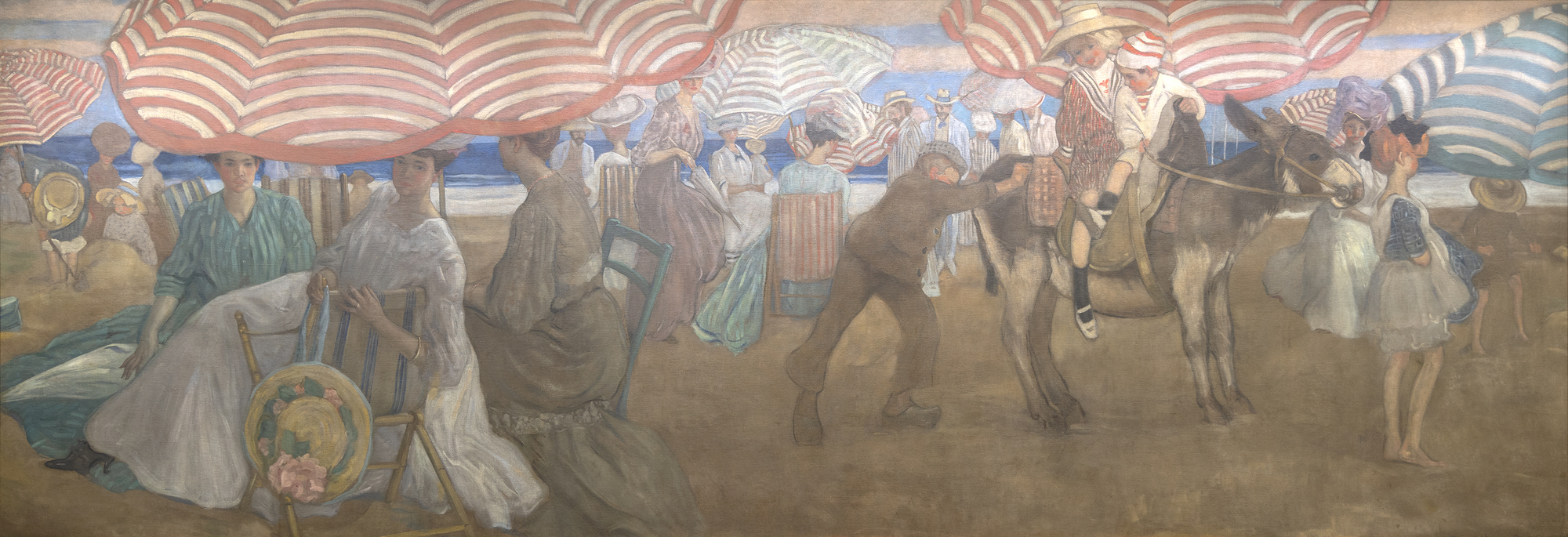
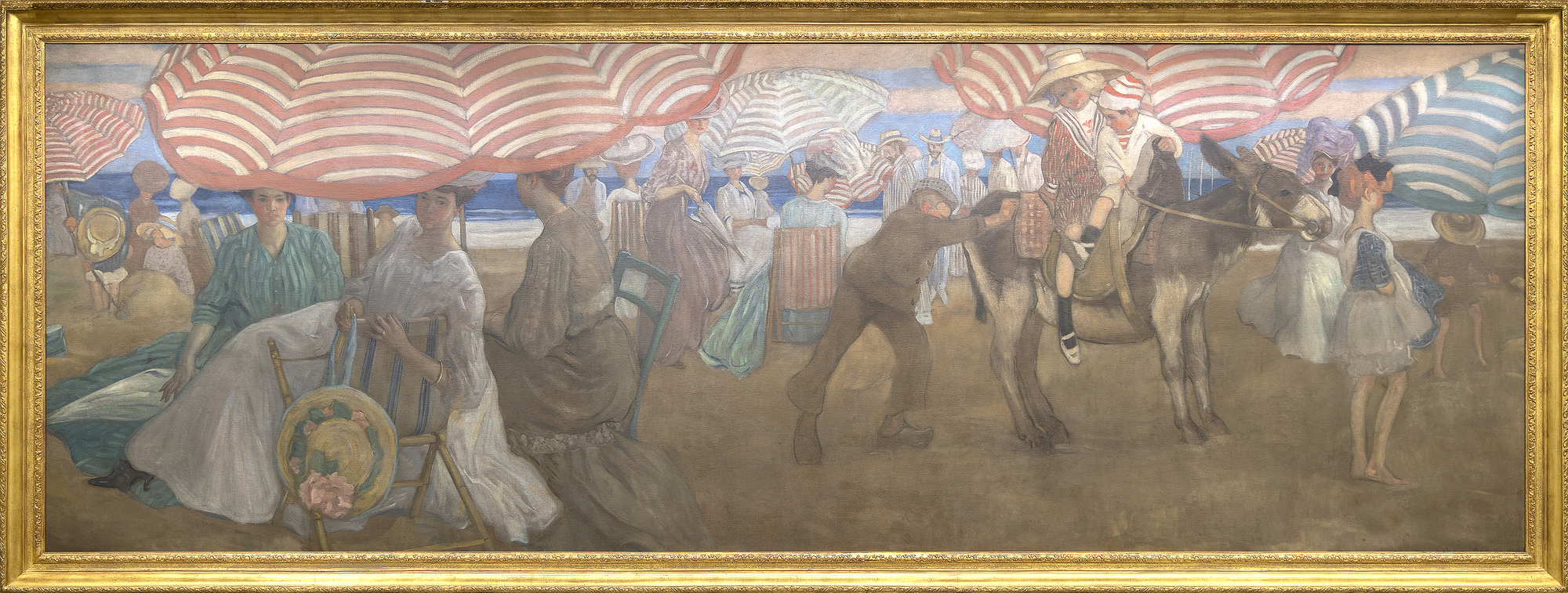
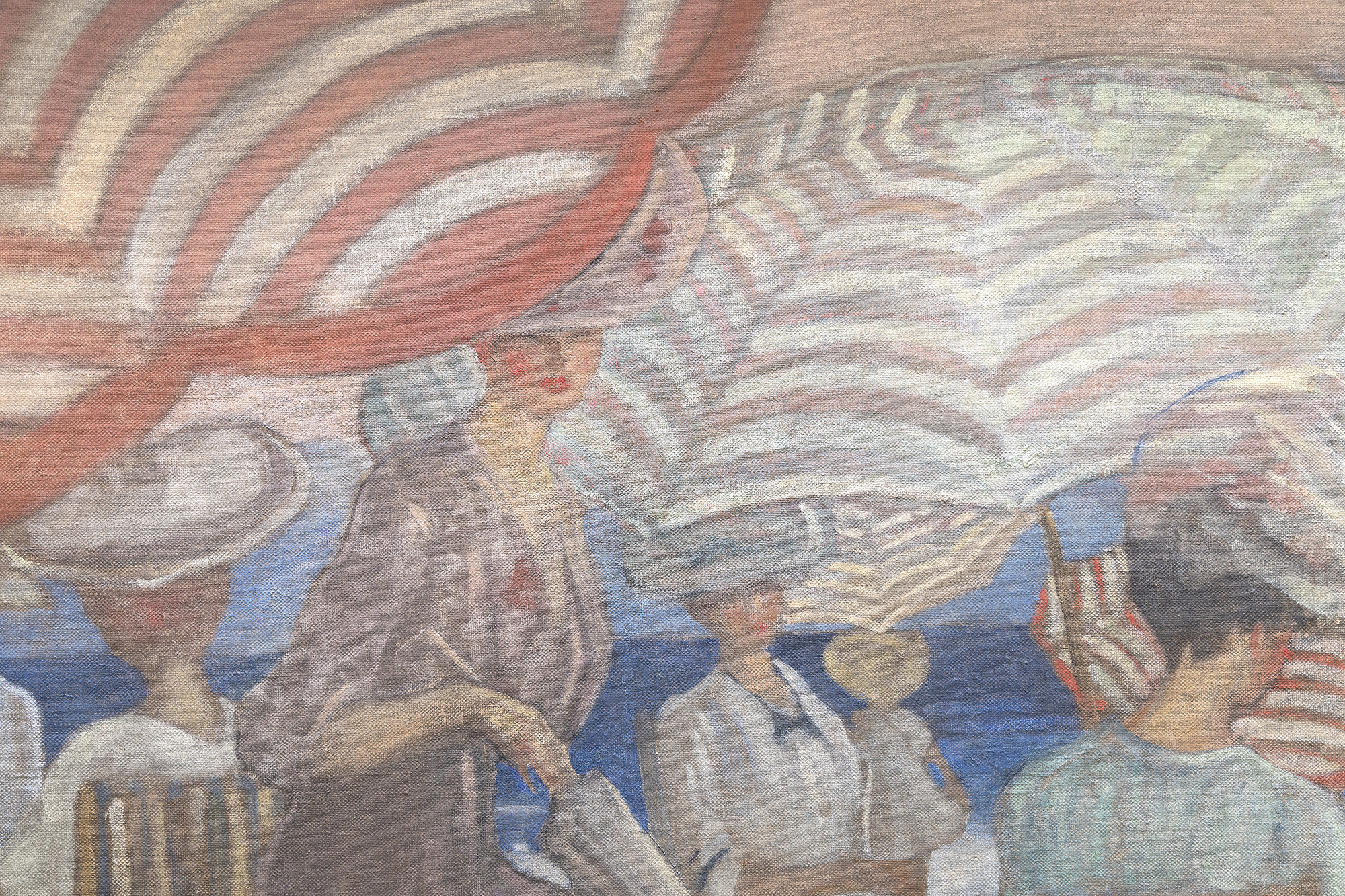
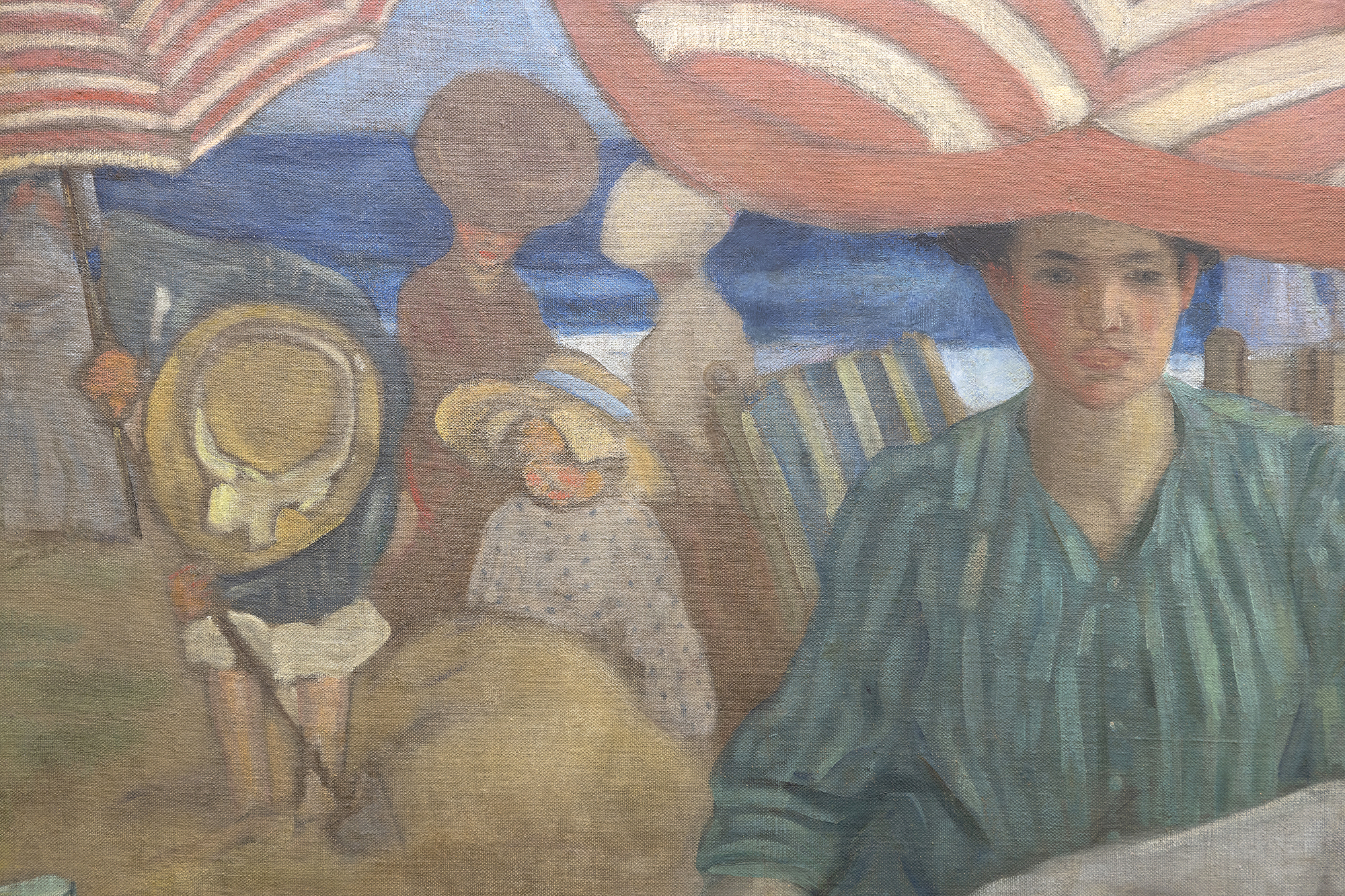
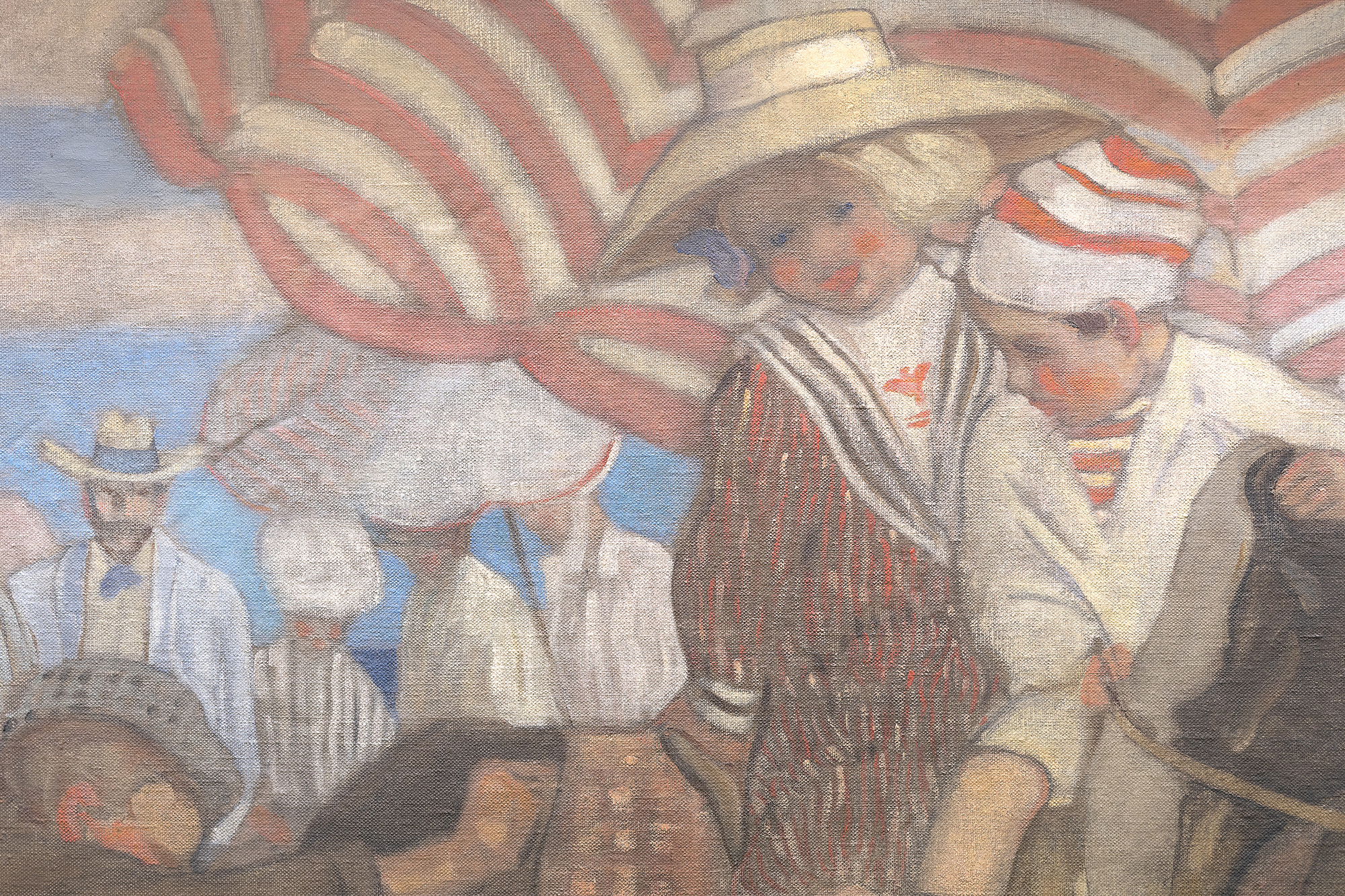
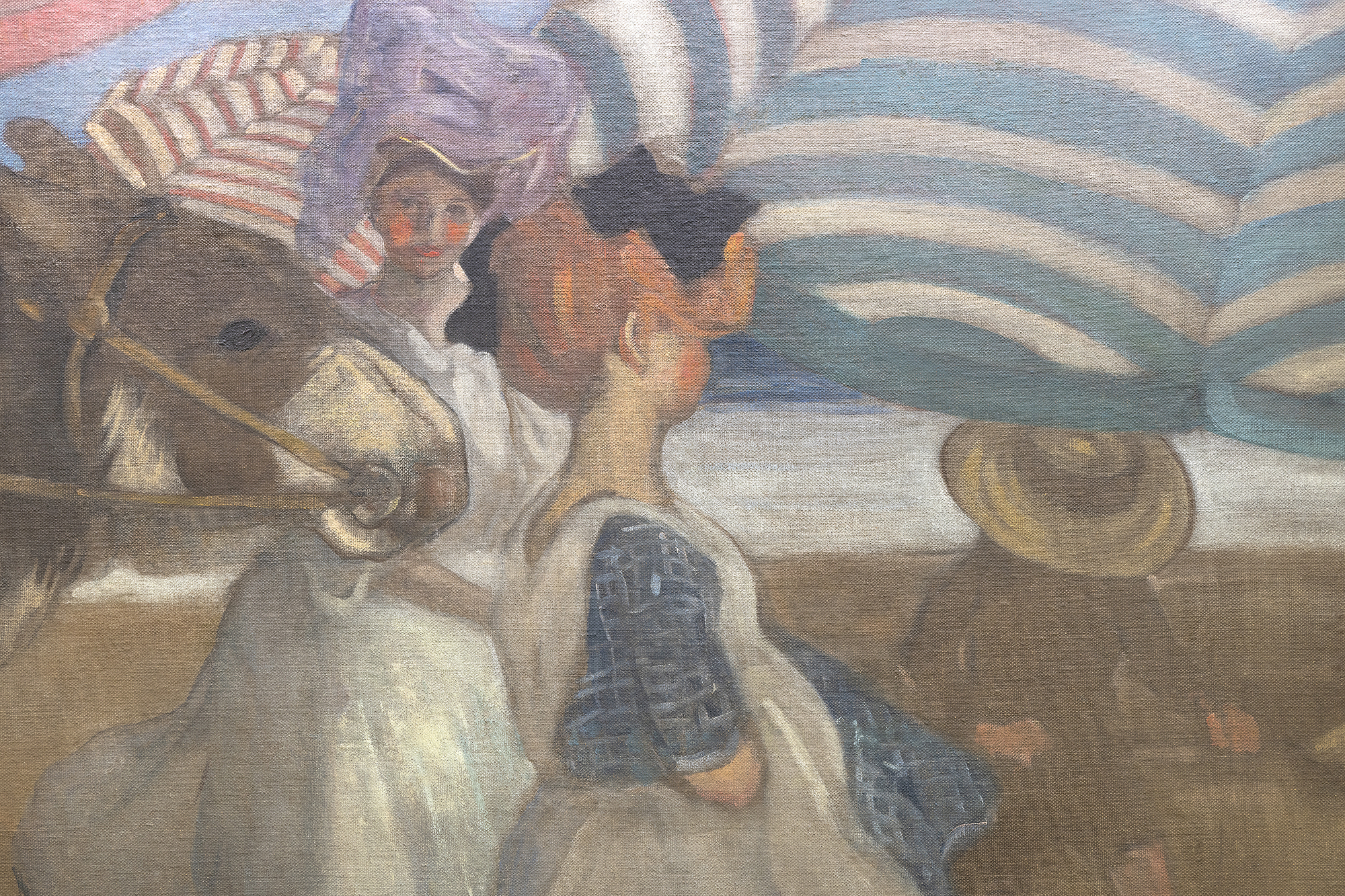
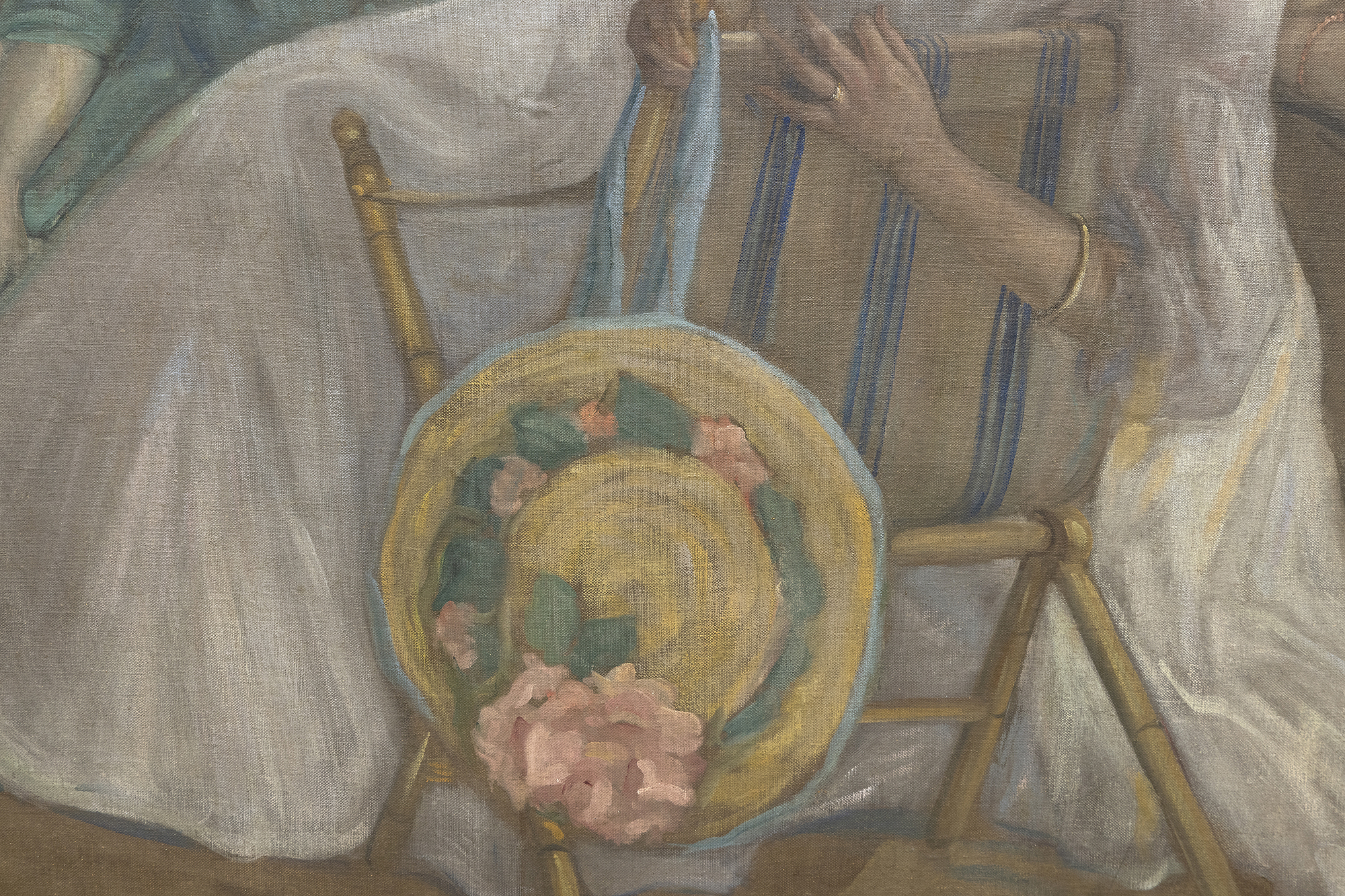
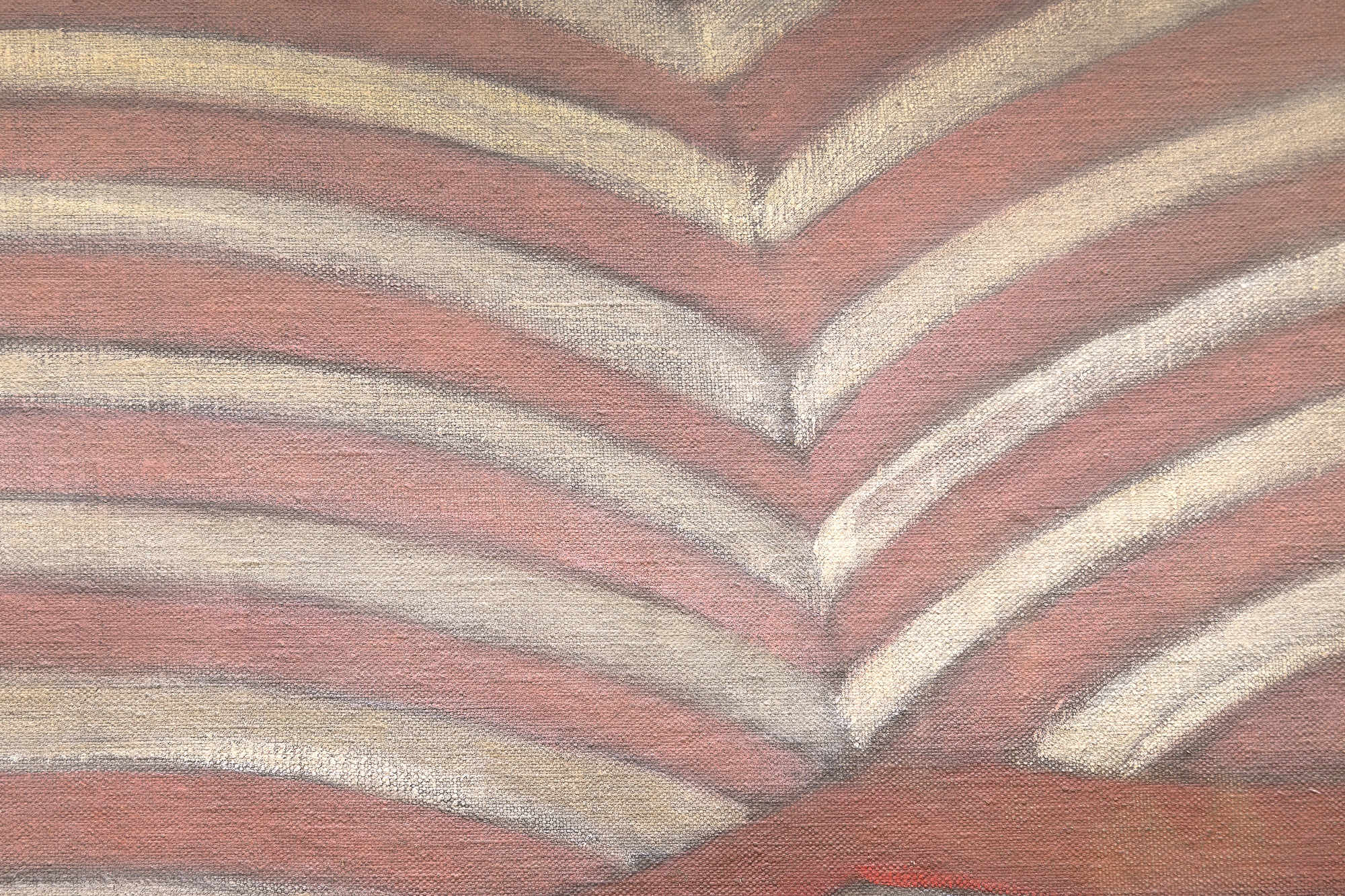
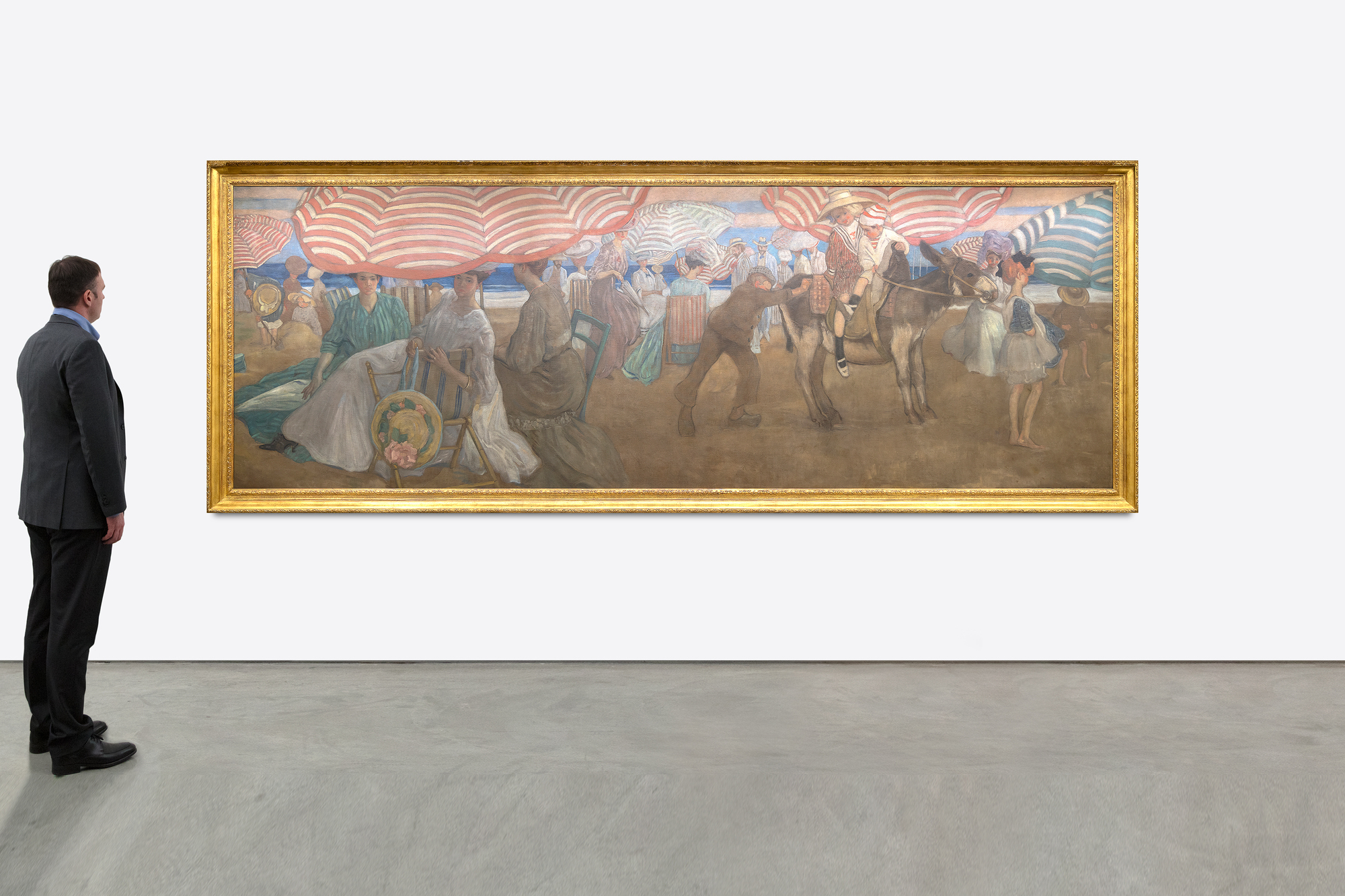

种源
罗德曼-万纳梅克为大西洋城的谢伯恩酒店委托设计,大卫-大卫画廊,费城。私人收藏,加州
Heather James Fine Art
展会信息
Telfair艺术博物馆,萨凡纳,乔治亚州,Frederick Carl Frieseke;一个美国印象派画家的演变,2000/2001;前往Dixon画廊和花园,孟菲斯,田纳西州,2001;圣地亚哥艺术博物馆,圣地亚哥,加利福尼亚,2001;Terra艺术博物馆,芝加哥,伊利诺斯州,2001文学
N.Kilmer, Frederick Carl Frieseke; The Evolution Of An American Impressionist, Princeton U...更。。。谈到这个问题的时候,他说:"我想说的是,我们都有一个共同的特点,那就是我们都有一个共同的目标。 国际工作室:美术和应用艺术的插图杂志,第四十三卷。 包括1911年3月、4月、5月和6月;编号169至172;"美国艺术家在 巴黎 "第263-270页。 L'Art Decoratif, Revue Mensuelle D'Art Contemporain, 8me Annee, 2 Semestre, Juillet 1906年-1906年12月;"La Decoration D'un Hotel Americain "第195-200页...少。。。历程
弗雷德里克-弗里斯克通常被认为是美国最好的印象派人物画家。然而,当他于1898年来到朱利安学院学习时,几位"纳比人 "画家仍然挥之不去,正是爱德华-维雅和皮埃尔-博纳尔丰富的装饰图案成为他早期成功的蓝图。这种影响清楚地体现在《海滩的下午》(Afternoon at the Beach) 中体积庞大的、打褶的、有条纹的雨伞的无节制重复中,这幅帆布壁画安装在奢华的谢尔本酒店餐厅中,可以俯瞰大西洋城的木板路。这种重复元素的统一影响使环境在色彩方案中充满了云状的阁楼,让人联想到维拉和戈布林挂毯的丰富性,而不是他在1910年至1920年这十年间更熟悉的绘画中的阳光和破碎色彩的效果。
1906年2月,《海滩的午后》在艺术家的指导下安装完毕。这幅画在这家豪华酒店展出了几十年,吸引了 "钻石吉姆 "詹姆斯-布坎南-布雷迪每周支付1000美元的永久居住费,并成为从欧文-柏林到约翰-菲利普-索萨,从埃塞尔-巴里摩尔到阿尔-乔尔森等一大批富裕的社会名流、金融家和知名人士的不褪色的记忆。毋庸置疑,这幅画高挂在餐厅的大墙上,对艺术家的知名度和美誉度做出了贡献。
今天,我们可以把这幅长长的、类似于壁画的作品看作是令人愉快的上世纪初的服装研究,或者是对维多利亚时代的风俗习惯的信息揭露,就像性别分组的独立领域所暗示的那样。但最重要的是,《海滩午后》记录了艺术家对女性的无限喜悦和欣赏,在这里,她是在家庭、母亲和社会背景下表达的。这个主题为弗里斯克带来了大西洋两岸的赞誉和奖项,时至今日,他仍被许多人视为美国最受欢迎的具象画家之一。
博物馆收藏的画作
北卡罗莱纳州艺术博物馆,罗利
洛杉矶县艺术博物馆
蒂森-博内米萨国家博物馆,马德里
休斯顿美术博物馆
大都会艺术博物馆,纽约
加州圣马力诺的亨廷顿酒店
国家艺术馆,华盛顿特区。
芝加哥艺术学院
图片库
认证
海滩的午后》可以在Linda McWhorter的《Frederick Carl Frieseke: The Evolution of an American Impressionist 》展览目录的第139页中找到。 该展览及其相应的目录是由乔治亚州萨凡纳的Telfair艺术博物馆制作的。目录指出《海滩的午后》的独特起源是为历史悠久的谢尔本酒店绘制的壁画。
询问
你可能也喜欢






































